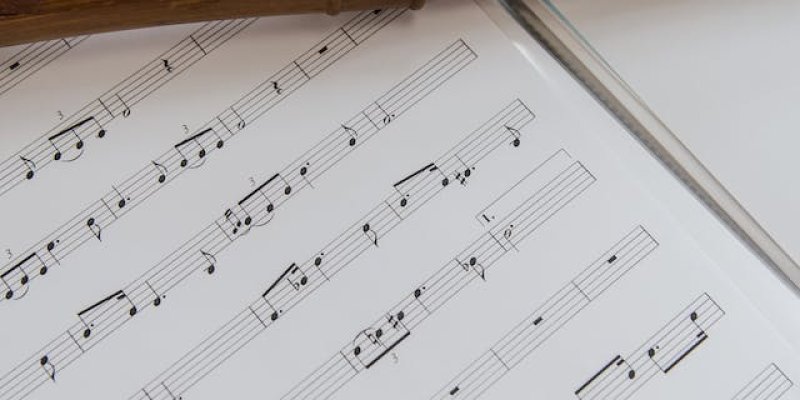
In the language of music, sharps (#) and flats (♭) stand as elemental signposts, guiding musicians through a variety of pitches as they read sheet music.
Sharps elevate notes by a half step, giving compositions brightness and vigor, while flats lower notes, imparting a mellower, more somber tone.
The choice between these symbols isn’t random; it shapes the emotional texture of a piece. Sharps often inject a sense of urgency or excitement, while flats evoke depth and introspection.
Understanding this duality brings an understanding to musical interpretations, allowing musicians to convey nuanced emotions and listeners to experience music on a profound level.
There are times you will come across double sharps and double flats when reading music. These symbols, rarely encountered, push the boundaries of pitch, adding a unique flavor to compositions.
A double sharp raises the note by two half steps, intensifying its sharpness, while a double flat lowers it by the same interval, deepening its flatness.
Related Post: 5 Ways To Tell What Key A Song Is In
The natural sign (♮) acts as a reset button, returning a note to its unaltered state. Flat signs, sharp signs, and natural signs are what we like to call accidentals in music.
In some cases, these extra notes that add flavor will need a sharp or a flat sign instead of a natural sign in order to show the musician they must sing or play a different note than intended.
For example, in the key of C, a natural wouldn't change a thing in the scale since there are no sharps or flats in the key of C in the first place. To indicate a raised fourth in the key of C, you will need to put a sharp symbol next to the note.
It may sound funny to call it an "accidental" since you really won't be singing the changed note on accident, but it could sound like an accident and feel strange that you broke the rules of the scale for that song.
Once you've played or sung through enough accidentals though, you'll start to get the hang of it.
Related Post: What Does A Natural Do To A Note?
Being sharp, when discussing musical performance, takes on a less favorable meaning. It represents a musician's tendency to sing or play notes above the intended pitch.
This phenomenon often occurs due to overzealousness, nervousness, or lack of control. Sharpness can distort melodies, creating a jarring, dissonant effect that takes away from the overall harmony. But somehow, it tends to sound a little better than going flat (in most cases, even though this is subjective).
Either way, overcoming this habit demands a lot of training, a keen ear, and self-awareness. Acknowledging the issue is the first step towards precision, paving the way for improvement and a harmonious musical performance.
On the flip side, being flat signifies a musician's tendency to sing or play notes below the intended pitch. It often stems from insufficient breath support, improper vocal technique, or lack of confidence.
Flatness drains the life from music, making it sound dull and uninspiring. Musicians caught in the trap of flatness face challenges in capturing the audience's attention and conveying the intended emotions of a piece.
It reflects a lack of precision, robbing the performance of its brilliance and leaving listeners yearning for the vibrancy that comes with pitch-perfect execution.
Overcoming flatness, just like being sharp, requires training, focused rehearsal, and a determination to elevate one's musicality.
But when it comes down to it, being pitchy is a common part of the musician's journey, especially for beginners. It's important to remember that perfection is not the goal in music, as our voices are not like precisely tuned instruments.
All singers, even the greatest ones, have pitchy moments. It's a natural and human aspect of singing that adds flavor and expression to our performances.
If you find yourself struggling with singing flat or sharp, don't worry! It takes time, practice, and experience to improve. Gain confidence by singing alone and in front of others, and consider learning the basics of music theory and ear training to enhance your pitch accuracy.
Related Post: Pitch Vs. Tone - Understanding The Difference In Terms

As a session singer, writer, and producer that has worked with over 300 clients to provide high-quality jingles, singles, and features, Yona spends her time creating and marketing new music and helpful resources for creators. Check out Yona’s latest releases on her Spotify, her Youtube and share if you like it!
If you are in need of singer, songwriter or song producer services, see what Yona Marie can offer you on her services page.